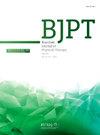Five-repetition chair-stand test vs. handgrip strength: Which better predicts mortality risk? a follow-up study in 43,605 middle-aged and older adults
IF 3.2
3区 医学
Q1 ORTHOPEDICS
引用次数: 0
Abstract
Background
Ageing reduces muscle strength and function, increasing mortality risk. Identifying simple performance markers can guide interventions for healthy ageing.
Objective
To assess the prospective dose-response association of the 5-repetition Chair Stand Test (5-CST) and handgrip strength (HGS) with mortality in middle-aged and older adults.
Methods
This prospective study included community-dwelling participants aged 50 years or older from the SHARE study. HGS and 5-CST were assessed at baseline, with all-cause mortality tracked through follow-up interviews. Cox regression with restricted cubic splines was used, controlling for several confounders.
Results
43,605 participants (mean age (SD): 65.3 (9.1), 54 % women) were included. During a mean follow-up of 7.3 ± 2.2 years, there were 4154 deaths (9.5 %). Both 5-CST and HGS were curvilinearly associated with all-cause mortality. Using the median level of 5-CST as a reference (11 s), 10th percentile of 5-CST (7 s) showed a hazard ratio (HR) of 0.74 (95 %CI: 0.69, 0.80). The 90th percentile (18 s) of 5-CST showed a HR of 1.18 (95 %CI: 1.14, 1.22). Stratified analysis indicated 5-CST was most strongly associated with mortality in women. Regarding HGS, using the median level as a reference (33 kg), the 10th percentile of muscle strength (21 kg) showed a HR of 1.62 (95 %CI: 1.50, 1.75). The 90th percentile (51 kg) of muscle strength showed a HR of 0.58 (95 %CI: 0.52, 0.64).
Conclusion
Both tools provide valuable information, but HGS may be considered more relevant for identifying those at increased mortality risk, while 5-CST may be especially useful in women.
五次重复椅架测试与握力测试:哪个能更好地预测死亡风险?一项对43605名中老年人的随访研究
衰老会降低肌肉力量和功能,增加死亡风险。确定简单的绩效指标可以指导健康老龄化的干预措施。目的评价5次椅站试验(5-CST)和握力(HGS)与中老年人群死亡率的预期剂量反应关系。方法本前瞻性研究纳入了来自SHARE研究的50岁或以上的社区居民。基线时评估HGS和5-CST,并通过随访追踪全因死亡率。采用限制三次样条的Cox回归,控制了几个混杂因素。结果共纳入43,605名参与者(平均年龄(SD): 65.3(9.1),女性占54%)。平均随访7.3±2.2年,死亡4154例(9.5%)。5-CST和HGS与全因死亡率呈曲线早期相关。以5-CST中位数水平为参考(11 s), 5-CST第10百分位(7 s)的危险比(HR)为0.74 (95% CI: 0.69, 0.80)。5-CST的第90百分位(18 s)显示HR为1.18 (95% CI: 1.14, 1.22)。分层分析表明,5-CST与女性死亡率的关系最为密切。关于HGS,使用中位数水平作为参考(33 kg),肌肉力量的第10百分位数(21 kg)显示HR为1.62 (95% CI: 1.50, 1.75)。第90百分位(51公斤)肌肉力量的HR为0.58 (95% CI: 0.52, 0.64)。结论两种工具都提供了有价值的信息,但HGS可能被认为与识别死亡风险增加的人群更相关,而5-CST可能对女性特别有用。
本文章由计算机程序翻译,如有差异,请以英文原文为准。
求助全文
约1分钟内获得全文
求助全文
来源期刊
CiteScore
6.10
自引率
8.80%
发文量
53
审稿时长
74 days
期刊介绍:
The Brazilian Journal of Physical Therapy (BJPT) is the official publication of the Brazilian Society of Physical Therapy Research and Graduate Studies (ABRAPG-Ft). It publishes original research articles on topics related to the areas of physical therapy and rehabilitation sciences, including clinical, basic or applied studies on the assessment, prevention, and treatment of movement disorders.

 求助内容:
求助内容: 应助结果提醒方式:
应助结果提醒方式:


